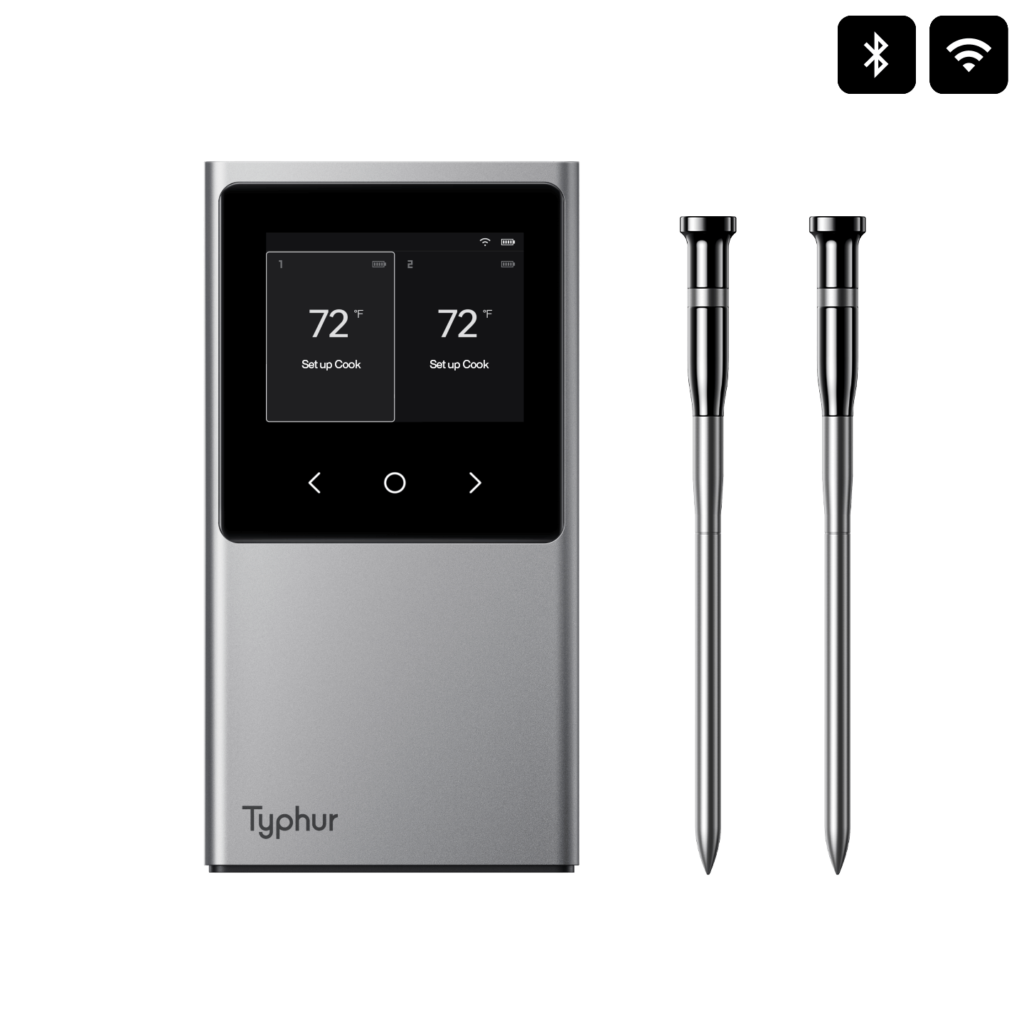Try our ultimate smoked pork belly recipe! Juicy, tender, and packed with smoky flavor, it’s a BBQ favorite that’s easy to make at home.

Smoked Pork Belly
Pork belly is the meat cut from the pig’s belly, it comes with distinct layers of fat and lean meat. It is rich in oil and has a tender, chewy texture. Bacon, commonly found in butchers, is made from slices of pork belly that have been cured and smoked.
When low and slow cooking, the fat in pork belly gradually melts, and the meat becomes increasingly tender. Smoking is an excellent method for making delicious pork belly! Serve it with roasted cauliflower, roasted carrots, or Japanese ramen.
A whole unseasoned pork belly weighing more than 2 pounds is ideal for making smoked pork belly. You can find this at most butcher shops or Costco. I strongly recommend using a whole, skinless pork belly, as removing the skin allows the smoke and seasonings to penetrate the meat more effectively. If you need to remove the skin, your butcher can help you.
How Long to Smoke Pork Belly
For a 2-pound pork belly, it may take you about 2 hours. However, this can vary based on the thickness of the meat, the brand of smoker, and the grill’s ambient temperature.
So, always aim for the internal temperature of the meat rather than the time. A wireless meat thermometer is essential for this, and the Typhur Sync wireless meat thermometer is one of the best. It features two probes, a device base, and an app that supports both WiFi and Bluetooth connections.

Smart Bluetooth and WiFi Meat Thermometer
Recommended Internal Temperatures for Smoked Pork Belly
- 166°F (74°C): At this temperature, pork belly is cooked through and safe to eat, but the fat may not be fully rendered, and the connective tissues might not have completely broken down. This level is suitable if you prefer a firmer texture.
- 195°F to 203°F (90°C to 95°C): Smoking up to this higher temperature range allows the collagen in the meat to break down more fully, resulting in a texture that is very tender and easy to pull apart. The fat is also more rendered, providing a richer flavor and mouthfeel.
How to Smoke Pork Belly
1. Preheat the smoker: Get the fire going in your smoker (preferably hickory or apple wood), and preheat it to 225°F (107°C).
2. Make the dry rub: In a bowl, mix salt, black pepper, garlic powder, onion powder, and paprika until well combined. Alternatively, you can use your favorite rub powder.
3. Season the pork belly: With a sharp knife, score a 1-inch grid pattern into the fat layer of the skinned pork belly, being careful not to cut into the meat. Apply a thin layer of barbecue sauce to the surface of the pork belly as a binder for the dry rub, then evenly sprinkle the prepared rub over it.
4. To smoke: Place the seasoned pork belly on the grill to smoke, using a wireless meat thermometer to monitor the internal temperature until it reaches 166°F (74°C).
The Typhur Sync wireless meat thermometer makes this process much easier. Before smoking, insert the probe into the thickest part of the meat, ensuring the safety line is fully immersed. In the Typhur App, connect your Typhur Sync device, then select pork → roast → belly from the parameters list. Set the target temperature to 166°F (74°C). To begin, simply press the start button on your phone. You will be notified once your food is ready to be removed from the smoker.

5. Resting: Once the pork belly reaches the target temperature, use tongs to remove it and place it on a heat-resistant surface. Wrap it in foil and let it rest for at least 3 minutes. (Note: the internal temperature will continue to rise.)
6. Serve: Carefully remove the probe. Slice and serve!

Smoked Pork Belly Recipe
Video
Equipment
- Smoker
- Tongs
- Mixing Bowl
- Pastry Brush
- Chef Knife
Ingredients
Pork Belly
- 2 pounds pork belly skin off
- barbecue sauce
Barbecue Rub
- 1.3 oz kosher salt
- 1.4 oz crushed black pepper
- 2 tsp garlic powder
- 2 tsp onion powder
- 0.7 oz paprika
Instructions
- Prepare a smoker with wood or pellets (preferably hickory or apple wood) to 225℉/107℃.
- Prepare a bowl. Add salt, black pepper, garlic powder, onion powder, and paprika powder. Mix well.1.3 oz kosher salt, 1.4 oz crushed black pepper, 2 tsp garlic powder, 2 tsp onion powder, 0.7 oz paprika
- To make a 1″ cross-hatch throughout the skin of the pork belly, use a sharp knife to slice through the fat, but not the flesh. This process is more effortless when the pork belly is cold.
- Brush a thin layer of barbecue sauce on the surface of the pork belly, and then sprinkle the rub evenly on its surface. Alternatively, you can use your favorite rub powder.barbecue sauce, 2 pounds pork belly
- To ensure accuracy, insert the probe into the thickest part of the meat, making sure the safety line is completely immersed.
- Select pork→ roast→ belly in the parameters list. Set the target temperature to 166℉/74℃.
- Transfer the pork belly into your preheated smoker, then securely close the lid.
- To begin the process, simply press the start button on your phone. You will be notified once your food is ready to be removed from the smoker.
- Using tongs, carefully remove the pork belly and place it on a heat resistant surface. Wrap it with foil and let it rest for at least 3 minutes. (Note: the internal temperature will continue to rise.)
- Carefully remove the probe.
- Slice and serve!
Nutrition PER SERVING
(Nutrition information is calculated automatically by Spoonacular API and should be considered an estimate.)




